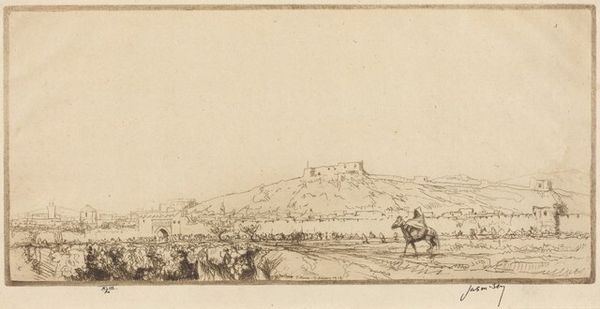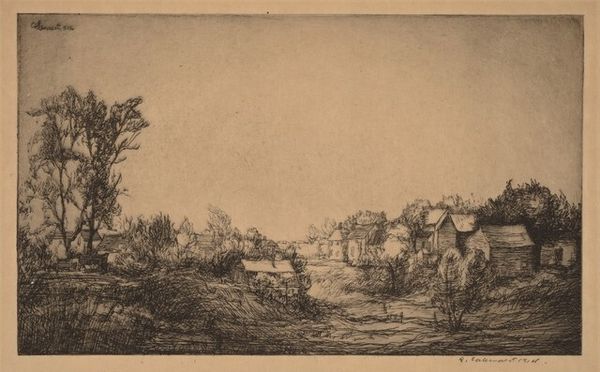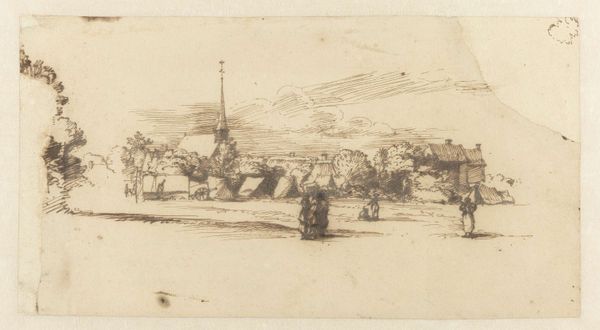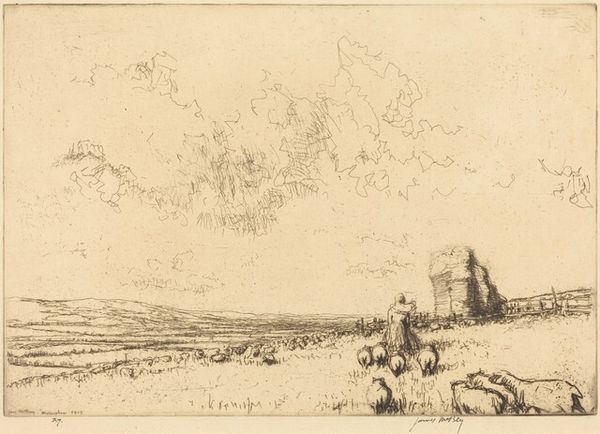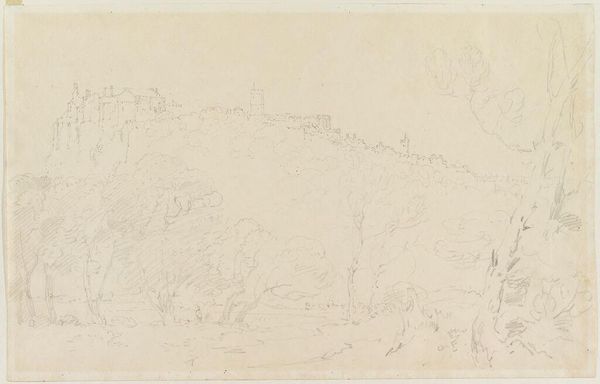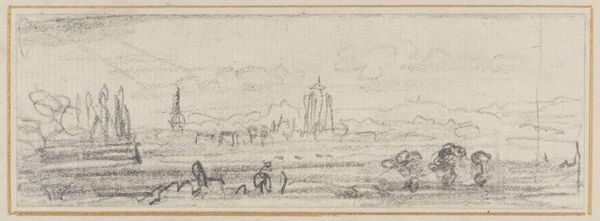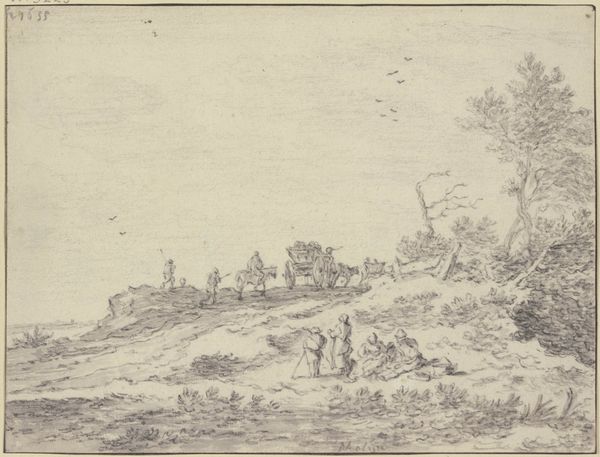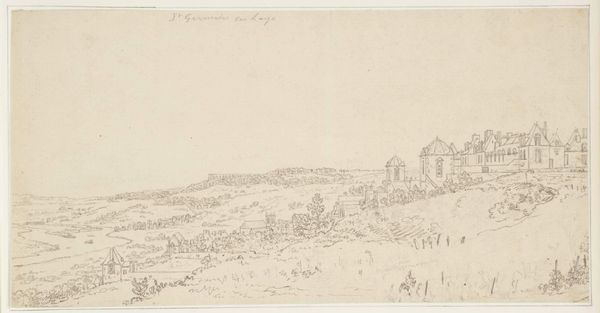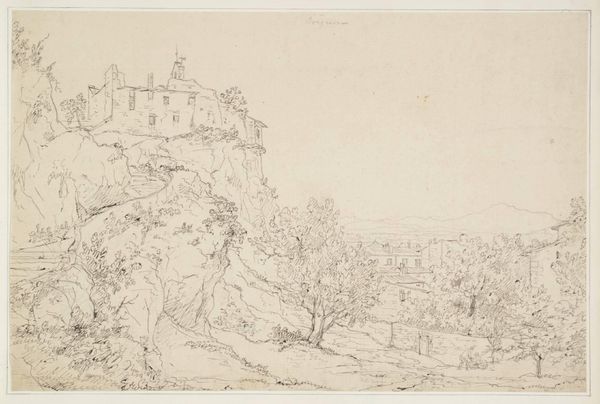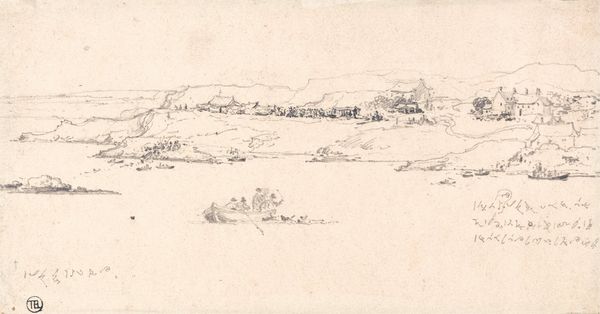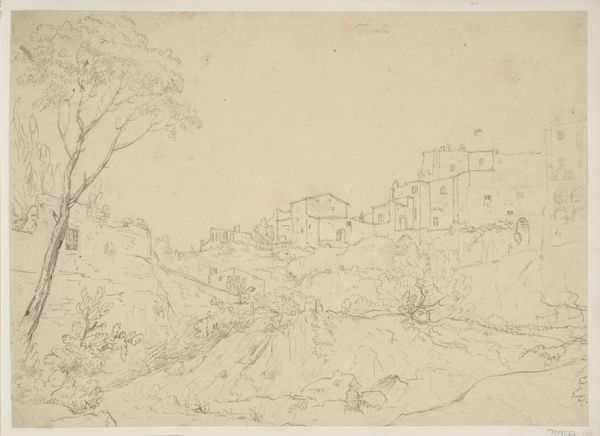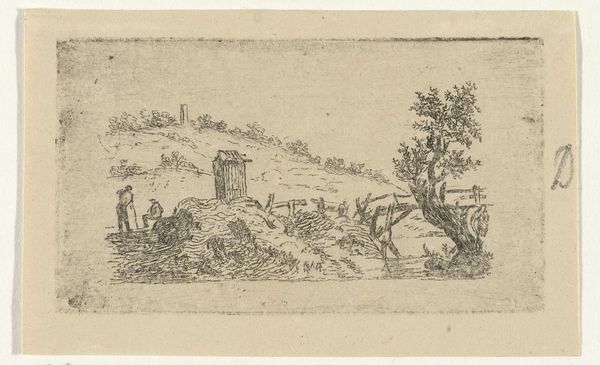
print, etching
# print
#
etching
#
landscape
#
etching
#
orientalism
#
cityscape
Copyright: National Gallery of Art: CC0 1.0
Curator: James McBey created "The Approach to Tetuan" in 1913. This work is an etching, showcasing an Orientalist view of a Moroccan city. Editor: At first glance, there is a real contrast with the stark, bare foreground. It feels very sparse. And then the walls and crowds come almost bursting into view with this mass of implied stories, with some individuals much clearer than others. Curator: Yes, I think we must contextualize this image through post-colonial theory and art history. McBey’s perspective, embedded in an era of colonial expansion, inherently reflects a Western gaze upon a ‘foreign’ landscape and people. What do you notice regarding the means by which McBey made the picture? Editor: Well, the etching itself relies heavily on the interplay of light and shadow. The process and materiality are crucial here. Look at how he uses delicate lines to render the landscape against areas of more intense hatching that detail architecture. This adds real depth. It gives a palpable sense of atmosphere and climate through manipulating marks. And what do you see in its subject? Curator: What interests me is not only how the figures in the foreground are positioned within the larger sociopolitical context but how gender, race, and class dynamics are visually articulated. Are we given agency or individuality? Are the represented individuals presented as active participants in their environment, or are they exoticized objects for the viewer’s consumption? Editor: The image begs the question of who is making the work, how the process and materials themselves were manufactured and distributed, and why we are looking at North Africa through a Scottish lens. But what's really striking is the ambiguity—there's a strong sense of a bustling marketplace but with a certain austerity. The architecture provides contrast with the barren lands. Curator: By exploring McBey’s “The Approach to Tetuan” within these intersectional narratives, we hope to broaden understanding of the ways in which identity and power converge in visual representations, reflecting both historical realities and ongoing social constructs. Editor: Absolutely. Appreciating McBey’s manipulation of materials enables the work to offer a broader discourse on empire and Orientalism. And hopefully these layers offer a new approach for audiences.
Comments
No comments
Be the first to comment and join the conversation on the ultimate creative platform.
